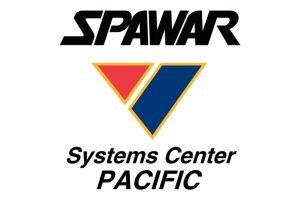The DTRA LENR Report That Isn’t a DTRA Report

Sept. 14, 2016 – By Steven B. Krivit –
A LENR report titled “Investigation of Nano-Nuclear Reactions in Condensed Matter,” with the Defense Threat Reduction Agency (DTRA) logo on the cover page, is circulating on the Internet. The report itself is factual. But it’s only connection to DTRA is that the agency was one of several government organizations that had sponsored research cited in the report. The report was written primarily by low-energy nuclear reaction (LENR) researcher Pamela Mosier-Boss. The full story requires historical context.
Mosier-Boss is an analytical chemist who worked at the U.S Navy’s Space and Naval Warfare Systems Center (SPAWAR) in San Diego from 1989 to 2015. In 2012, she was abruptly ordered to immediately terminate all of her LENR research, return any unused funds, and cease all further publications on the topic of LENRs. The full story about why she was ordered to terminate her LENR research is explained in my book, Hacking the Atom, Explorations in Nuclear Research, Volume 1.
Mosier-Boss’ report “Investigation of Nano-Nuclear Reactions in Condensed Matter” is a summary of the LENR research at SPAWAR. After her LENR research was terminated, she had to fight to write the report and to win its public release, as she explained to me in an e-mail last year.
“Admiral Brady didn’t want us to accept money to write the final DTRA report,” Mosier-Boss wrote. “In the end, I was allowed to write the report. I can’t share it with anyone who is non-DOD. My department head had me release it DOD only, even though the sponsor ultimately decides the distribution.
“The sponsor tried to get it released, but his superiors required a technical review of the report. We got it reviewed, and the reviewers recommended full unclassified distribution. The report is still in limbo and has been since 2012.”
On April 4, 2016, I sent a Freedom of Information Act request to DTRA for the report. I received nothing, not even an acknowledgment letter.
On Sunday, I contacted Mosier-Boss again to find out more about the report. She and her colleague, Larry Forsley, a researcher with JWK International Group, who is a co-author of the report, worked for four years to get permission to release the report publicly. Forsley, Mosier-Boss wrote, did most of the heavy pushing.
“The project was unclassified, and the DTRA program manager William Wilson agreed it should have public distribution,” Mosier-Boss wrote. “But he had problems at DTRA getting it released. He had to get it reviewed by three reviewers, which is unheard of for a final report. They said it should have public distribution. … We included the distribution statement on the last page in case we get any grief from SSC-Pacific.”
I wrote to Mosier-Boss that the DTRA logo on the cover page on her report looked strange; it is pixilated, and the aspect ratio is wrong. I asked her who put the logo on the report.
“I did,” Mosier-Boss wrote. “I downloaded a copy of it. I thought DTRA would replace the front page with one of their own. But they didn’t. When we wrote technical reports at SPAWAR, they had their own standard cover page. I assumed DTRA did, as well. Apparently, they don’t.”
On Monday, I contacted Ron Lovas, a public information officer at DTRA. After I explained that I had received no response from my April FOIA request and that the document was now showing up on the Internet, he sent me a copy immediately.
I asked Lovas additional questions. Here is our discussion:
Krivit: Is this, in fact, a DTRA report?
Lovas: The documents are authentic.
Krivit: Did DTRA have anything to do with the authorship of this report, and if so, what role did DTRA play?
Lovas: The report was drafted by U.S. government-funded scientists and delivered to DTRA as the final report when the effort was closed out.
Krivit: Did DTRA have anything to do with the release of this report, and if so, where did it release this report?
Lovas: The work done by U.S. government-funded scientists, which is detailed in the final report, was reviewed by the agency and cleared for public release.
Therefore, the document is a SPAWAR report written for DTRA. The minor exception is the single-page DTRA distribution statement that the authors appended to the end of the report.
Questions? Comments? Submit a Letter to the Editor.

